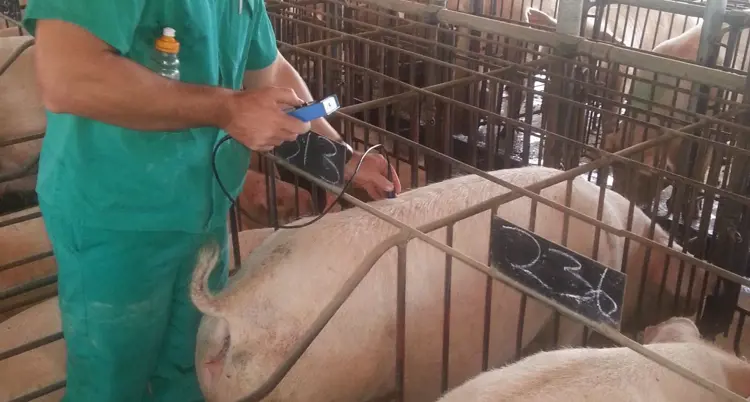Quality dry sow feeding advice
Achieving longevity and good results in conception rate, high numbers of piglets born alive and good weaning results is the goal. Planning the sows’ retirement also becomes an important factor for the farmer in order to facilitate replacement at the correct time. This planning can cause some disappointment and often has a “snow-balling” affect due to incorrect feeding or body condition achieved during pregnancy. Even with correct planning, one sometimes gets disappointed by some individual animals that did not achieve optimum body condition during pregnancy. To help improve this factor, De Heus believes that quality feeding advice can be given by analysing and giving an overview of sow condition achieved in the different stages of sow cycles.

- the sow’s condition when going in and coming out of the farrow house
- is the sow’s udder developing at the right time at farrowing
- back fat loss during lactation
- condition recovery within five weeks of pregnancy
For most farms it is easier to have only three categories of conditions for sows coming out of the farrow house. Feeding is done according to the sow being thin, fat or normal. Colour codes works well on the back of the sow, as well as markers on pens for the sows in need of a different kind of approaches. When feeding by hand, a pre measured scoop which is also colour-coded can be used.
The factors influencing a pig’s energy requirement are size, temperature, growth rate and fatness, reproduction and activity. Due to the cost of energy it is very important that only required levels are being fed to each individual animal. “Efficient feeding” then becomes a key practise and needs to be monitored and managed.
The blending of quality raw materials into a ration and advice on how to apply and adapt it correctly will, therefore, help to achieve optimum nutrition and the full genetic potential of breeding animals.
In conclusion we believe that achieving optimum conditions for breeding animals is of the utmost importance, and are often linked directly to production results and issues. One could adjust feeding strategies according to objectives at all stages. We can help make these strategies accurate and simplify them to work practically on your farm.
